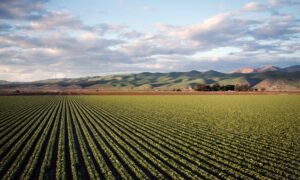In an era dominated by data-driven solutions, agriculture stands at the forefront of innovation, merging tradition with cutting-edge technology. Bharath Nagamalla explores the transformative potential of combining big data and reliability engineering to reshape the development of resilient systems for smart agriculture. This synergy promises to enhance efficiency and sustainability. This article delves into key advancements, highlighting their profound impact on revolutionizing the agricultural landscape for a smarter, more sustainable future.
A Holistic Approach to Smart Agriculture
Smart agriculture leverages data-driven decision-making to optimize every aspect of farming. Central to this evolution is the integration of reliable data systems that can collect, process, and analyze information in real time. These systems empower farmers to monitor soil health, predict crop yields, and manage resources efficiently. The shift towards such technologies ensures not only productivity but also sustainability, addressing pressing environmental concerns.
The Role of Big Data in Precision Farming
Big data technologies play a pivotal role in precision farming, enabling granular insights into field conditions. By utilizing advanced sensors and Internet of Things (IoT) devices, farmers can gather data on soil moisture, temperature, and nutrient levels. This information is then processed using robust analytics platforms, providing actionable insights that enhance crop management and reduce waste. The ability to predict outcomes with precision allows for informed decision-making, ultimately leading to better harvests.
Building Resilient Data Infrastructure
Reliability engineering principles are at the core of creating durable data systems for agriculture. These principles ensure that the systems remain operational even under challenging conditions, such as extreme weather events. By implementing fault-tolerant architectures and robust recovery mechanisms, these systems can guarantee consistent data flow and accurate analysis. Such reliability is crucial for applications like pest control and irrigation, where delays or errors can have significant repercussions.
Enhancing Connectivity in Rural Areas
One of the major challenges in smart agriculture is the lack of reliable connectivity in rural areas. Innovations in network technologies, such as low-power wide-area networks (LPWANs), are bridging this gap by providing cost-effective and long-range communication solutions. These advancements enable seamless data transmission from remote fields to centralized systems, ensuring that farmers in even the most isolated locations can benefit from cutting-edge technologies.
Embracing Artificial Intelligence and Machine Learning
Artificial intelligence (AI) and machine learning (ML) are revolutionizing the way agricultural data is utilized. These technologies can identify patterns and predict trends that might go unnoticed by human analysis. For instance, ML algorithms can forecast weather conditions or detect early signs of crop diseases, allowing farmers to take proactive measures. By continuously learning and adapting, AI systems enhance their accuracy and effectiveness over time, making them indispensable tools for modern agriculture.
Addressing Sustainability Through Data
The integration of data-driven systems in agriculture is about increasing efficiency and fostering sustainability. Precision farming techniques minimize water use, fertilizers, and pesticides, reducing their environmental impact. Additionally, data analytics can guide crop rotation and diversification strategies, preserving soil health and biodiversity. These practices align with global efforts to combat climate change and ensure food security for future generations.
Future Outlook: The Path Ahead
Smart agriculture is an emerging field with tremendous potential to revolutionize farming practices through innovation and technology. By integrating advanced data systems, artificial intelligence, and enhanced connectivity, the sector can achieve greater efficiency, productivity, and sustainability. These technologies can optimize resource use, improve crop yields, and address challenges like climate change and food security. However, realizing this potential requires collaboration across multiple stakeholders. Technologists must create practical, scalable solutions, while policymakers establish supportive frameworks, and farmers adopt and adapt to these advancements. Together, they can pave the way for a future where agriculture is smarter, more resilient, and more sustainable.
In conclusion, Bharath Nagamalla’s insights into reliable data systems highlight the pivotal role of technology in revolutionizing agriculture. By effectively tackling challenges and integrating groundbreaking innovations, smart agriculture has the potential to redefine the future of farming. This paradigm shift promises enhanced productivity, sustainability, and resilience, paving the way for a data-driven agricultural landscape. As these advancements unfold, they will serve as a foundation for a prosperous and sustainable global food system.



































